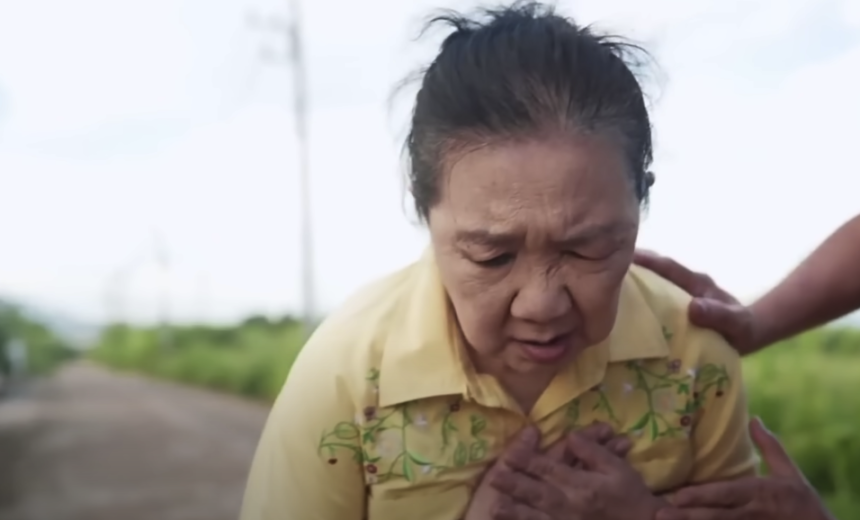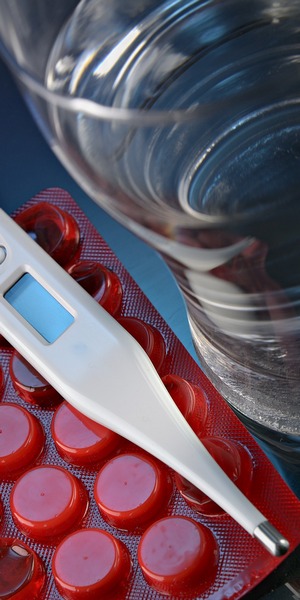Understanding Nursing Diagnosis for Hypertension

High blood pressure, also referred to as hypertension, affects a considerable number of people across the globe. It is a chronic medical condition marked by a sustained increase in the blood pressure within the arteries of the body. Recognizing a nursing diagnosis for hypertension is an essential aspect of the comprehensive nursing process, as it plays a vital role in delivering optimal care and achieving positive outcomes for patients. This diagnostic procedure helps identify potential or existing health issues, enabling the development and execution of effective care plans.
Comprehending the Essence of Nursing Diagnosis
In order to understand the connection between nursing diagnosis and hypertension, it is crucial to grasp the underlying concept. Nursing diagnosis encompasses the clinical judgment made by healthcare professionals regarding an individual, family, or community’s reaction to existing or potential health problems. This expert evaluation forms the basis for developing a comprehensive care plan. The North American Nursing Diagnosis Association (NANDA) has developed standardized diagnoses for numerous conditions, including hypertension, which nurses can utilize as a guiding framework when providing care to patients.
Nursing Diagnosis for Hypertension
One nursing diagnosis for hypertension is the risk for decreased cardiac output. This diagnosis pertains to the potential inadequacy of blood pumped by the heart to meet the body’s metabolic demands. This condition typically arises due to pressure overload on the heart. Multiple contributing factors contribute to this risk, such as alterations in heart rate, rhythm, conduction, and structural changes like heart hypertrophy. Nurses play a pivotal role in identifying and managing this risk to promote optimal cardiac function and prevent complications.
To effectively address the risk for decreased cardiac output, nurses employ a range of strategies and interventions. These may include:
- Assessment and monitoring: Consistently keeping an eye on essential indicators such as pulse rate, blood pressure, and oxygen saturation levels is crucial in identifying any irregularities or indications of reduced cardiac performance. We must maintain a vigilant watch over these vital signs to ensure optimal health and well-being;
- Medication administration: The healthcare provider administers prescribed medications, including beta-blockers or diuretics, to effectively manage underlying conditions that contribute to a reduction in cardiac output;
- Patient education: Educating patients and their families regarding lifestyle adjustments becomes crucial in promoting cardiac health and minimizing the risk of decreased cardiac output. This includes imparting knowledge about maintaining a diet that is heart-healthy, engaging in regular exercise, and adopting stress reduction techniques.
To optimize nursing care, it is crucial to establish collaboration with the healthcare team, which includes physicians, cardiologists, and other specialists. This collaborative effort aims to create personalized care plans tailored to address the unique risk factors and individual needs of every patient. By closely monitoring and effectively managing the risk of decreased cardiac output, nurses play a vital role in promoting optimal cardiac function and enhancing patient outcomes.
Insufficient Oxygen Supply to Tissues
Insufficient oxygen supply to tissues, known as ineffective tissue perfusion, is a nursing diagnosis that occurs when there is a diminished ability to adequately nourish the capillary-level tissues due to a decrease in oxygen delivery. This condition is closely linked to changes in arterial blood flow, which can result from heightened vascular resistance or impaired circulation. It is vital to recognize and address the root causes contributing to ineffective tissue perfusion in order to prevent complications and support the overall well-being of the tissues.
In order to effectively handle this nursing diagnosis, nurses utilize a range of interventions and strategies. These interventions and strategies may include:
- Assessment and monitoring: In order to identify indications of insufficient tissue perfusion, it is crucial to carry out a comprehensive evaluation of the patient’s vital signs, peripheral pulses, skin complexion, body temperature, and capillary refill time. Additionally, continuous monitoring of oxygen saturation levels and cardiac activity may be required for a more accurate assessment;
- Positioning and mobility: Supporting patients in maintaining appropriate body positioning and encouraging regular physical activity or walking, when suitable, to enhance blood circulation and minimize the likelihood of tissue hypoperfusion;
- Medication administration: Providing prescribed medications, such as vasodilators, anticoagulants, or antiplatelet agents, to enhance the circulation of blood, prevent the formation of clots, and effectively manage underlying conditions that contribute to inadequate tissue perfusion.
In addition, nurses work together with the healthcare team to establish an all-encompassing care strategy that caters to the individual requirements of every patient. This process may entail consulting with doctors, vascular experts, and other medical practitioners to ascertain the most suitable actions and therapies. Through vigilant monitoring and effective management of inadequate tissue perfusion, nurses have the ability to augment tissue oxygenation, foster the process of healing, and ultimately enhance the overall outcomes of patients.
Impaired Comfort
Impaired Comfort is a nursing diagnosis that is intricately linked with hypertension. Sustained high blood pressure can lead to feelings of discomfort and give rise to a range of symptoms, including headaches, vision issues, and overall physical uneasiness. Effectively managing impaired comfort entails addressing the underlying hypertension and implementing interventions aimed at alleviating the accompanying discomfort.
To proficiently tackle impaired comfort in hypertensive patients, nurses can utilize the following strategies and interventions:
- Assessment and monitoring: Performing a thorough evaluation of the patient’s blood pressure, level of pain, and accompanying symptoms in order to ascertain the magnitude of distress. Consistently observing and tracking vital indicators, including blood pressure and heart rate, can aid in detecting any variations or oscillations that might contribute to the sensation of discomfort;
- Medication management: Working in collaboration with the healthcare team to guarantee the proper management of medication for hypertension. This entails administering antihypertensive drugs as prescribed and monitoring their efficacy in controlling blood pressure and alleviating discomfort;
- Non-pharmacological interventions: Incorporating non-pharmacological interventions to enhance comfort and alleviate symptoms. These interventions encompass a range of techniques, including relaxation methods like deep breathing exercises or guided imagery. Additionally, creating a serene and soothing environment can contribute to stress reduction and promote relaxation.
By addressing the discomfort linked to hypertension, nurses have the opportunity to enhance the overall well-being of patients and play a significant role in improving the management of their blood pressure. Vital aspects of effective nursing care for alleviating discomfort associated with hypertension include collaborating closely with the healthcare team, educating patients on lifestyle modifications, and consistently monitoring their blood pressure.
Noncompliance
Nonadherence to prescribed treatment measures among hypertensive patients gives rise to a nursing diagnosis known as noncompliance. This condition can manifest due to a variety of factors, such as denial of the diagnosis, inadequate comprehension of the treatment plan, or financial limitations that impede the patient’s capacity to afford medications or implement necessary dietary adjustments. Dealing with noncompliance is crucial in order to guarantee the efficient management of hypertension and reduce the likelihood of complications.
To ensure effective management of noncompliance among hypertensive patients, nurses can employ the following strategies and interventions:
- Patient education: Delivering extensive knowledge to patients regarding their medical condition, emphasizing the significance of following the prescribed treatment plan, and elucidating the possible repercussions of non-adherence. This entails elucidating the enduring implications of high blood pressure, demonstrating correct methods for taking medication, and highlighting the importance of making lifestyle changes such as adopting a low-sodium diet and engaging in regular physical activity;
- Communication and support: Creating a welcoming and non-judgmental environment to foster effective communication with patients, with the aim of comprehending their apprehensions, obstacles, and difficulties related to adhering to their treatment plan. Providing assistance, debunking misconceptions or alleviating fears can play a crucial role in encouraging adherence and nurturing a collaborative partnership between the patient and the healthcare professionals;
- Collaborative care: Engaging in close collaboration with fellow healthcare practitioners, including physicians, pharmacists, and dietitians, to create a personalized care strategy that considers the unique requirements and circumstances of each patient. This collaborative effort may entail exploring alternative medication choices, offering information on financial aid resources, or engaging the expertise of a social worker to address socioeconomic factors that impact treatment adherence.
Through the utilization of education, effective communication, and collaborative healthcare, nurses possess the ability to empower individuals with hypertension, encouraging them to actively engage in their own treatment and enhance adherence. Consistent follow-up appointments, continuous blood pressure monitoring, and unwavering support play a vital role in reinforcing the significance of compliance, thereby leading to improved outcomes in the management of hypertension.
Planning and Interventions

Developing and executing effective strategies are pivotal stages in tackling the nursing diagnosis of hypertension. These strategies endeavor to oversee hypertension, mitigate symptoms, and avert potential complications. Presented below are essential guidelines for planning and implementing interventions:
Intervention Description Regular monitoring
Regularly monitoring the patient’s blood pressure and heart rate is crucial in evaluating the efficacy of interventions and making any required modifications to the treatment regimen. This process may entail utilizing a blood pressure cuff and a stethoscope or employing automated blood pressure monitors.Lifestyle education Offering in-depth education to the patient regarding lifestyle adjustments that can effectively control hypertension is paramount. This encompasses enlightening them about dietary modifications like reducing sodium intake, increasing the consumption of fruits and vegetables, as well as limiting alcohol and caffeine intake. Equally important is educating the patient about the significance of regular physical activity, maintaining a healthy weight, adopting stress management techniques, and quitting smoking. Medication adherence
Highlighting the significance of adhering to the prescribed medication regimen is crucial. It is essential to educate the patient about the purpose of each medication, potential side effects, and the importance of taking medications as per the scheduled instructions. Additionally, providing strategies to assist the patient in remembering to take their medication, such as pill organizers or smartphone reminders, can be immensely helpful.Home blood pressure monitoring Providing guidance to the patient on how to monitor their blood pressure at home and effectively identify any noteworthy fluctuations is vital. Equally important is educating them about when to promptly report any concerning readings to their healthcare provider. Psychosocial support Directing the patient to support groups or counselors who specialize in providing psychosocial support can be immensely beneficial. These valuable resources can assist the patient in effectively managing the emotional and psychological aspects of hypertension, ultimately promoting their overall well-being.
Through the development of a comprehensive care plan and the implementation of these interventions, nurses can empower patients to actively participate in the management of their hypertension. Regular follow-ups and continuous education play a vital role in providing ongoing support to patients, enabling them to achieve blood pressure control and enhance their overall health.
Conclusion
In the care of patients with high blood pressure, a nursing diagnosis for hypertension holds significant importance. It serves as a critical component through which nurses can identify existing or potential health concerns. By doing so, they can develop and execute effective care plans aimed at symptom management, enhancing quality of life, and preventing severe complications. This comprehensive process, complemented by patient education and regular monitoring, plays a vital role in the overall management of hypertension. The key lies in adopting a personalized approach that recognizes the unique needs and circumstances of each patient. By doing so, improved patient outcomes can be achieved, thus emphasizing the indispensable role of nurses in healthcare.
FAQS
No, it is not within the scope of a nurse’s responsibilities to provide a diagnosis for hypertension. The authority to diagnose this condition lies solely with licensed physicians or healthcare providers. Nevertheless, nurses play a pivotal role in recognizing potential health concerns, such as elevated blood pressure, which aids in the prompt identification and treatment of patients.
A nursing care plan is a well-thought-out strategy employed in patient care. It encompasses a nursing diagnosis, which assists in identifying both potential and existing health problems, and is subsequently followed by a comprehensive care plan outlining effective strategies to address these concerns. The primary objective of this plan is to effectively manage hypertension, alleviate accompanying symptoms, and proactively prevent any potential complications.
Patient education plays a vital role in empowering individuals with valuable knowledge regarding their medical condition. This knowledge serves to enhance patients’ understanding and awareness, leading to improved compliance with recommended lifestyle modifications and medication regimens. By actively engaging in patient education, individuals become better equipped to effectively manage hypertension, subsequently reducing the likelihood of experiencing severe complications.
The frequency of monitoring blood pressure may vary depending on the severity of hypertension and the guidance provided by healthcare professionals. Nevertheless, maintaining a regular practice of monitoring blood pressure levels is essential for the effective management of hypertension.








